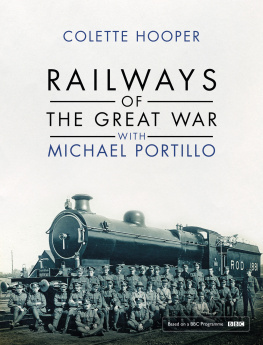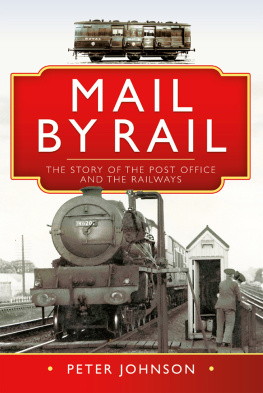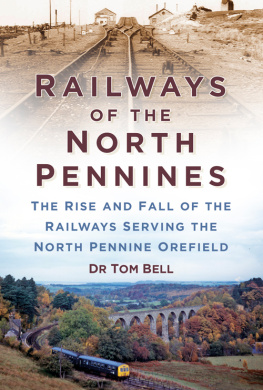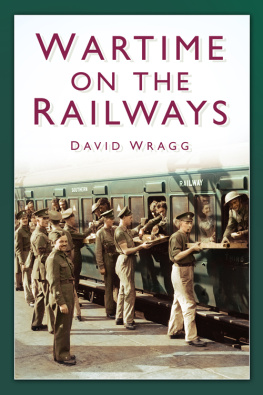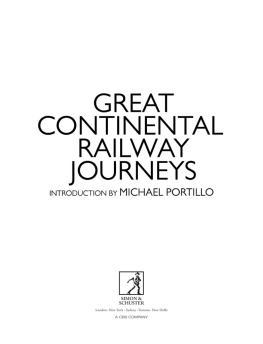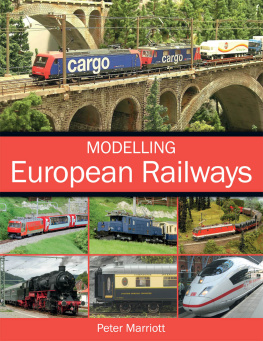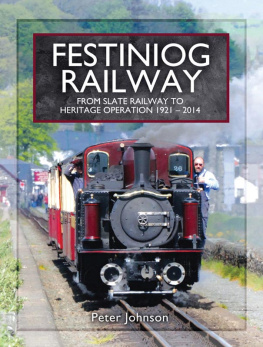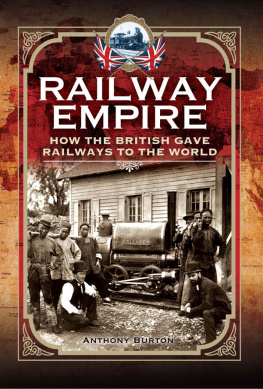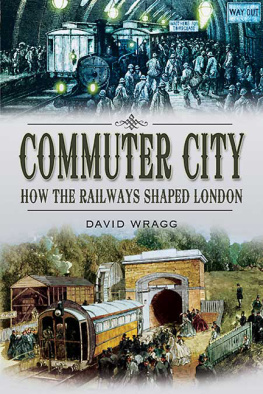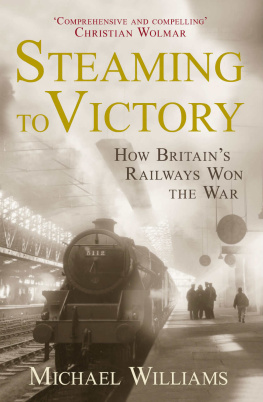About the Book
From the exploits of railwaymen at the Front to the secrets of railway spies who worked behind enemy lines; the manufacture of munitions in railway workshops to the role of railways in post-war remembrance this book explores some of the remarkable stories of the railway war. Individually, each illuminates a different aspect of the conflict. Taken together, they provide us with a fresh perspective on the First World War as a whole.
The Great War was the quintessential railway war. Railways helped to precipitate this mechanized conflict: they defined how it was fought and kept the home front moving; they conveyed millions to the trenches and evacuated the huge numbers of wounded. The railways sustained a terrible war of attrition and, ultimately, bore witness to its end.
In Railways of the Great War, Michael Portillo and Colette Hooper tell the forgotten story of the war on the tracks and explore the numerous ways in which Britains locomotives, railway companies and skilled railway workforce moulded the course of the conflict. From mobilizing men and moving weapons, to transporting food for troops and later taking grieving relatives to the battlefields on which their loved ones had fallen, the railways played a central role throughout this turbulent period in our history.
About the Author
COLETTE HOOPER is a television producer specializing in social history. She has been closely involved with BBC Twos highly successful Great British and Great Continental Railway Journeys franchise since 2010. She worked with the production team to develop Railways of the Great War with Michael Portillo, going on to edit much of the series. Colette studied History at Oxford University, with a focus on Early Modern Britain and Europe.
MICHAEL PORTILLO is now best known as a broadcaster. He has presented six series of Great British Railway Journeys, commissioned for BBC Two. He also appears weekly on BBC Ones sardonic late-night look at politics, This Week. Prior to turning to television and radio work Michael was a Member of Parliament, and a government minister for eleven years.
ACKNOWLEDGEMENTS
I HAVE ADVANCED gingerly into this historical territory, where so many far more expert than I have trodden before me. Of the huge literature devoted to the First World War and to the railways, titles I have turned to again and again include David Stevensons masterly overview of the conflict, 19141918: The History of the First World War, and Christian Wolmars accessible and inspiring railway histories, especially Engines of War and Fire and Steam. The two volumes of Edwin Pratts British Railways in the Great War, published in 1921, are not for the faint-hearted but are a mine of detailed information unmatched elsewhere.
I must thank all the contributors interviewed for the series, too many to name but without whom neither the television programmes nor this book would be possible. Im especially grateful to those who have given up their time to answer my questions and double-check facts. Special thanks are due to David Stevenson, who has acted as historical consultant to the programme and kindly reviewed this text. Of course, responsibility for any errors that remain is mine alone.
Colleagues past and present at Boundless have helped me build up my understanding of and passion for railway history over the last four years. I would particularly like to thank John Comerford for thinking of me for this project and Alison Kreps for her steady hand on the tiller; Tom Richardson and Bella Lloyd for sharing their research and contacts; and Rosie Wilcox and Giorgia Papapietro for their hard work on sourcing the images for this book. Chris Baker, thank you for your patience while I multitasked on this project and the programme.
Thanks to Cat Ledger for her encouragement throughout and to Michelle Signore for her clear vision. To Bobby Birchall for his beautiful design and especially to Ailsa Bathgate for her invaluable suggestions, clear corrections and moral support.
Special thanks to Michael Portillo, for writing the foreword but more importantly for his tireless commitment to sharing our rich railway history, come rain or shine, and to the BBCs Pam Cavannagh for steering us through this new railway venture.
A million thanks to Jane and Margaret I couldnt have written this book without your backup.
Finally, thank you, Ian, for always believing in me, for all the late nights reading drafts and for inspiring me to make this book the best it could be.
BIBLIOGRAPHY
Throughout the book I have tried to indicate the main sources for each story within the text. What follows is a more comprehensive, but not exhaustive, list of references. The works listed under General have all been used extensively throughout. Then more specific sources are listed by chapter under their story subheading. For simplicity, each source is listed only once, under the story for which it was primarily used, though it may also have been referred to elsewhere. Responsibility for any inadvertent omissions is my own.
GENERAL
Pratt, Edwin, British Railways and the Great War (London: Selwyn & Blount, 1921). The two volumes are available at http://archive.org/details/cu31924092566128 and http://archive.org/details/cu31924092566136
Railway Gazette: Special War Transportation Number (Stockport: The Moseley Railway Trust, 2013 [first edition by the Railway Gazette, 1920]).
Stevenson, David, With Our Backs to the Wall: Victory and Defeat in 1918 (London: Allen Lane, 2011).
Stevenson, David, 19141918: The History of the First World War (London: Penguin, 2012).
Westwood, J. N., Railways at War (London: Osprey Publishing Company, 1980).
Wolmar, Christian, Fire and Steam: How the Railways Transformed Britain (London: Atlantic, 2007, Kindle edition).
Wolmar, Christian, Engines of War: How Wars Were Won and Lost on the Railways (London: Atlantic Books, 2012).
WEB RESOURCES
British Library World War One resources http://www.bl.uk/world-war-one
Imperial War Museum podcasts http://www.1914.org/category/podcasts/
For information on the British Army www.1914-1918.net
INTRODUCTION
Bradshaws Continental Railway Guide (Oxford: Old House Books & Maps, 2012).
Emmerson, Charles, 1913: The World Before the Great War (London: The Bodley Head, 2013).
More, Charles, The Industrial Age: Economy and Society in Britain, 17501995 (London: Longman, 1997).
Nock, O. S., World Atlas of Railways (London: Mitchell Beazley, 1978).
Porter, Andrew (ed.), The Oxford History of the British Empire: Volume III: The Nineteenth Century (Oxford: Oxford University Press, 1999).
CHAPTER 1 A RAILWAY WAR BEGINS
Europes Railway Plans are Born
Hobsbawm, Eric, Age of Empire 18751914 (London: Weidenfeld & Nicolson, 2010, Kindle edition).
Railway Manual: War (Uckfield, Naval & Military Press, 2009 [London: HMSO, 1911]).
Stevenson David, War by Timetable? The Railway Race before 1914, Past & Present, No. 162 (February 1999).
Van Creveld, Martin, Supplying War: Logistics from Wallenstein to Patton (Cambridge: Cambridge University Press, 2004).
War by Timetable The Climax to the Railway Age?
Taylor, A. J. P., The First World War: An Illustrated History

